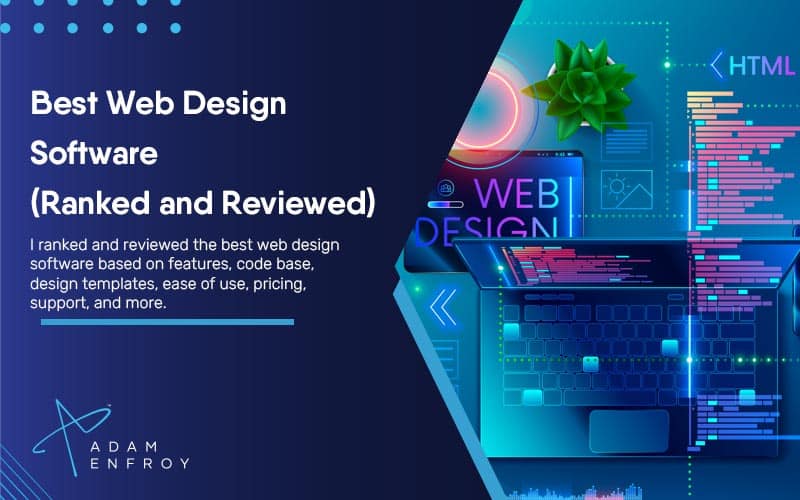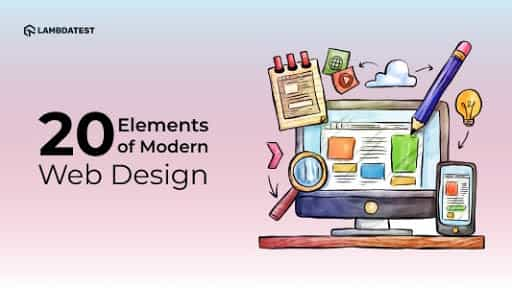All Categories
Featured
Table of Contents
- – What Is Web Design? A Comprehensive Guide - Wi...
- – Web Design Services + Website Development Age...
- – Google Web Designer - Home Tips and Tricks:
- – Why Web Design Is Dead - - Ux Magazine Tips a...
- – Web Design Services - Networksolutions.com Ti...
- – 10 Good Deeds In Web Design - Nielsen Norman ...
- – Web Development Bachelor's Degree - Full Sai...
- – Penner Home - Durham Web Design - Penner Web...
- – Web Design Courses & Tutorials - Codecademy ...
- – The Top Ecommerce, Website Design ... - Seat...
- – Web Design Services By Freelance Website Des...
What Is Web Design? A Comprehensive Guide - Wix.com Tips and Tricks:
Quick summary Functionality and the utility, not the visual style, identify the success or failure of a site. Since the visitor of the page is the only person who clicks the mouse and for that reason chooses whatever, user-centric style has actually established as a standard method for successful and profit-oriented website design - web design frederick md.
and the utility, not the visual style, identify the success or failure of a website. Given that the visitor of the page is the only person who clicks the mouse and therefore chooses whatever, user-centric style has actually ended up being a standard method for effective and profit-oriented website design. After all, if users can't use a function, it might also not exist.
g. where the search box need to be placed) as it has already been performed in a number of short articles; rather we focus on the techniques which, utilized appropriately, can result in more advanced design choices and streamline the process of perceiving presented info. Please see that you may be thinking about the usability-related posts we have actually released prior to: Concepts Of Great Website Design And Efficient Web Style Standards, In order to utilize the concepts effectively we initially need to comprehend how users engage with websites, how they think and what are the basic patterns of users' habits.
Web Design Services + Website Development Agency Tips and Tricks:
Visitors look at each brand-new page, scan some of the text, and click on the first link that captures their interest or vaguely resembles the important things they're looking for. There are large parts of the page they do not even look at. A lot of users search for something interesting (or useful) and clickable; as soon as some appealing prospects are found, users click.
If a page supplies users with high-quality content, they are prepared to jeopardize the content with ads and the design of the site. This is the reason not-that-well-designed sites with premium content acquire a great deal of traffic over years. Content is more crucial than the design which supports it.

Users don't check out, they scan. Notification how "hot" areas abrupt in the middle of sentences. This is typical for the scanning procedure. Very basic concept: If a website isn't able to fulfill users' expectations, then designer stopped working to get his job done appropriately and the company loses money. The greater is the cognitive load and the less intuitive is the navigation, the more ready are users to leave the site and search for alternatives.
Google Web Designer - Home Tips and Tricks:
Neither do they scan web page in a linear style, going sequentially from one website area to another one. Rather users satisfice; they pick the very first affordable choice. As quickly as they find a link that looks like it might cause the objective, there is an excellent possibility that it will be immediately clicked.
It doesn't matter to us if we comprehend how things work, as long as we can utilize them. If your audience is going to imitate you're designing signboard, then style fantastic signboards." Users want to be able to manage their browser and count on the constant information discussion throughout the website.
If the navigation and site architecture aren't intuitive, the number of enigma grows and makes it harder for users to understand how the system works and how to receive from point A to point B. A clear structure, moderate visual ideas and easily identifiable links can help users to discover their course to their aim.
Why Web Design Is Dead - - Ux Magazine Tips and Tricks:

claims to be "beyond channels, beyond items, beyond circulation". What does it suggest? Considering that users tend to explore websites according to the "F"-pattern, these three declarations would be the very first aspects users will see on the page once it is filled. Although the design itself is basic and intuitive, to comprehend what the page has to do with the user requires to look for the answer.
Once you've accomplished this, you can interact why the system is beneficial and how users can benefit from it. Don't Squander Users' Perseverance, In every project when you are going to use your visitors some service or tool, try to keep your user requirements minimal.
Newbie visitors want to, not filling long web types for an account they may never utilize in the future. Let users check out the site and discover your services without forcing them into sharing private data. It's not affordable to force users to enter an email address to test the feature.
Web Design Services - Networksolutions.com Tips and Tricks:
And that's what you desire your users to feel on your web website. The registration can be done in less than 30 seconds as the type has horizontal orientation, the user does not even require to scroll the page.
A user registration alone suffices of an impediment to user navigation to minimize incoming traffic. 3. Handle To Focus Users' Attention, As sites supply both fixed and vibrant material, some aspects of the interface bring in attention more than others do. Clearly, images are more captivating than the text simply as the sentences marked as bold are more appealing than plain text.
Focusing users' attention to particular locations of the website with a moderate usage of visual components can help your visitors to get from point A to point B without thinking of how it actually is supposed to be done. The less enigma visitors have, the they have and the more trust they can develop towards the business the site represents.
10 Good Deeds In Web Design - Nielsen Norman Group Tips and Tricks:
Aim For Feature Exposure, Modern web styles are typically slammed due to their method of guiding users with aesthetically appealing 1-2-3-done-steps, big buttons with visual results and so on. From the design perspective these aspects really aren't a bad thing.
The site has 9 primary navigation choices which are visible at the first look. What matters is that the content is well-understood and visitors feel comfortable with the method they communicate with the system.
com gets directly to the point. No cute words, no overemphasized declarations. Instead a cost: simply what visitors are searching for. An optimum option for effective writing is touse short and concise expressions (come to the point as rapidly as possible), use scannable layout (categorize the material, use several heading levels, use visual components and bulleted lists which break the circulation of consistent text blocks), usage plain and objective language (a promo does not require to sound like ad; offer your users some reasonable and unbiased reason that they need to utilize your service or remain on your website)6.
Web Development Bachelor's Degree - Full Sail University Tips and Tricks:
Users are rarely on a site to take pleasure in the design; moreover, in many cases they are trying to find the details in spite of the style - web design frederick md. Pursue simpleness rather of complexity. From the visitors' point of view, the best website style is a pure text, with no advertisements or additional content blocks matching exactly the query visitors utilized or the material they have actually been looking for.
Finch clearly presents the details about the website and offers visitors an option of choices without overcrowding them with unnecessary material. Not only does it help to for the visitors, however it makes it possible to perceive the info provided on the screen.
Complex structures are more difficult to check out, scan, evaluate and deal with. If you have the option between separating 2 design sections by a noticeable line or by some whitespace, it's typically better to use the whitespace solution. (Simon's Law): the much better you manage to offer users with a sense of visual hierarchy, the much easier your content will be to perceive.
Penner Home - Durham Web Design - Penner Web Design ... Tips and Tricks:
The very same conventions and rules need to be used to all elements.: do the most with the least quantity of cues and visual aspects. 4 major indicate be considered: simplicity, clearness, distinctiveness, and focus. Simplicity includes just the elements that are most crucial for interaction. Clearness: all parts must be developed so their significance is not ambiguous.
Conventions Are Our Good friends, Conventional style of site aspects doesn't result in a boring website. In fact, as they minimize the finding out curve, the need to find out how things work. For example, it would be an usability nightmare if all websites had different visual presentation of RSS-feeds. That's not that different from our routine life where we tend to get used to fundamental principles of how we arrange information (folders) or do shopping (placement of products).
understand what they're anticipating from a site navigation, text structure, search positioning etc. A normal example from functionality sessions is to translate the page in Japanese (presuming your web users do not understand Japanese, e. g. with Babelfish) and supply your use testers with a job to find something in the page of various language.
Web Design Courses & Tutorials - Codecademy Tips and Tricks:
Test Early, Test Typically, This so-called TETO-principle needs to be applied to every web design project as use tests typically provide into significant problems and problems related to a provided layout. Test not too late, not too little and not for the wrong reasons.
Some important indicate bear in mind: according to Steve Krug, and screening one user early in the job is better than screening 50 near the end. Accoring to Boehm's very first law, mistakes are most regular throughout requirements and design activities and are the more costly the later on they are eliminated.
That implies that you develop something, test it, repair it and then test it once again. There might be issues which haven't been discovered during the first round as users were practically blocked by other problems.
The Top Ecommerce, Website Design ... - Seattle Tips and Tricks:

This holds for designers. After you've dealt with a site for couple of weeks, you can't observe it from a fresh point of view any longer. You understand how it is developed and for that reason you understand exactly how it works you have the knowledge independent testers and visitors of your website would not have.
It can be linked to other areas such as graphic style, user experience, and multimedia arts, however is more appropriately seen from a technological perspective. It has actually become a big part of individuals's everyday lives. It is difficult to think of the Internet without animated graphics, different styles of typography, background, videos and music.

During 1991 to 1993 the World Wide Web was born. Text-only pages could be viewed using a simple line-mode browser. There had been no integrated approach to graphic design components such as images or sounds.
Web Design Services By Freelance Website Designers - Fiverr Tips and Tricks:
The W3C was developed in October 1994 to "lead the Web to its full potential by developing typical protocols that promote its development and ensure its interoperability." This prevented any one company from monopolizing a propriety web browser and shows language, which could have altered the impact of the Web as a whole.
As this has actually occurred the innovation of the web has actually likewise carried on. There have actually also been significant changes in the method people use and access the web, and this has actually changed how websites are developed. Considering that completion of the browsers wars [] brand-new browsers have been released. A number of these are open source implying that they tend to have faster development and are more supportive of new standards.
Learn more about Lovell Media Group LLC or TrainACETable of Contents
- – What Is Web Design? A Comprehensive Guide - Wi...
- – Web Design Services + Website Development Age...
- – Google Web Designer - Home Tips and Tricks:
- – Why Web Design Is Dead - - Ux Magazine Tips a...
- – Web Design Services - Networksolutions.com Ti...
- – 10 Good Deeds In Web Design - Nielsen Norman ...
- – Web Development Bachelor's Degree - Full Sai...
- – Penner Home - Durham Web Design - Penner Web...
- – Web Design Courses & Tutorials - Codecademy ...
- – The Top Ecommerce, Website Design ... - Seat...
- – Web Design Services By Freelance Website Des...
Latest Posts
Wicky Design: Philadelphia Web Design Tips and Tricks:
Penner Home - Durham Web Design - Penner Web Design ... Tips and Tricks:
Freelance Website Designer Frederick MD
More
Latest Posts
Wicky Design: Philadelphia Web Design Tips and Tricks:
Penner Home - Durham Web Design - Penner Web Design ... Tips and Tricks:
Freelance Website Designer Frederick MD